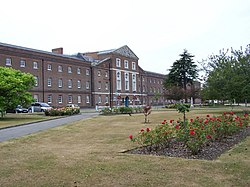The Gentleman's Magazine

The Gentleman's Magazine was a monthly magazine[1] founded in London, England, by Edward Cave in January 1731.[2] It ran uninterrupted for almost 200 years, until 1922. It was the first to use the term magazine (from the French magazine, meaning "storehouse") for a periodical.[3] Samuel Johnson's first regular employment as a writer was with The Gentleman's Magazine.
History
The original complete title was The Gentleman's Magazine: or, Trader's monthly intelligencer. Cave's innovation was to create a monthly digest of news and commentary on any topic the educated public might be interested in, from commodity prices to Latin poetry. It carried original content from a stable of regular contributors, as well as extensive quotations and extracts from other periodicals and books. Cave, who edited The Gentleman's Magazineunder the pen name "Sylvanus Urban", was the first to use the term magazine (meaning "storehouse") for a periodical. Contributions to the magazine frequently took the form of letters, addressed to "Mr. Urban". The iconic illustration of St. John's Gate on the front of each issue (occasionally updated over the years) depicted Cave's home, in effect, the magazine's "office".
Before the founding of The Gentleman's Magazine, there were specialised journals, but no such wide-ranging publications (although there had been attempts, such as The Gentleman's Journal, which was edited by Peter Motteux and ran from 1692 to 1694).
Samuel Johnson's first regular employment as a writer was with The Gentleman's Magazine. During a time when parliamentary reporting was banned, Johnson regularly contributed parliamentary reports as "Debates of the Senate of Magna Lilliputia". Though they reflected the positions of the participants, the words of the debates were mostly Johnson's own. The name "Columbia", a poetic name for America coined by Johnson, first appears in a 1738 weekly publication of the debates of the British Parliament in the magazine.[4][5]
The magazine's long-running motto, E pluribus unum, Latin for "Out of many, one", is thought to have inspired the use of the phrase as an unofficial motto of the United States. Motteux's The Gentleman's Journal had previously used the phrase.[6][7][8]
A skilled businessman, Edward Cave developed an extensive distribution system for The Gentleman's Magazine. It was read throughout the English-speaking world and continued to flourish through the 18th century and much of the 19th century under a series of different editors and publishers. It went into decline towards the end of the 19th century and finally ceased general publication in September 1907. However, issues consisting of four pages each were printed in very small editions between late 1907 and 1922 in order to keep the title formally "in print".
Royal Hospital Haslar
| Royal Hospital Haslar | |
|---|---|
| Royal Navy Ministry of Defence Portsmouth Hospitals NHS Trust | |
 Royal Hospital Haslar | |
| Geography | |
| Location | Gosport, Hampshire, England, United Kingdom |
| Coordinates | |
| Organisation | |
| Care system | Naval / Military / NHS |
| Services | |
| Beds | Up to 350 |
| History | |
| Opened | 1753 |
| Closed | 2009 |
| Links | |
| Lists | Hospitals in England |
The Royal Hospital Haslar in Gosport, Hampshire, which was also known as the Royal Naval Hospital Haslar, was one of Britain's leading Royal Naval Hospitals (and latterly a tri-service MOD hospital) for over 250 years. Built in the 1740s, it was reputedly the largest hospital in the world when it opened,[1] and the largest brick-built building in Europe.[2]
In 1998 the closure of the hospital was announced, conditional on the establishment of an MOD Hospital Unit at a nearby civilian hospital. In 2007 the military withdrew; Haslar then continued to function for a short time under civilian management, before closing entirely in 2009. In 2018, the historic buildings began to be converted into retirement flats, and in 2020 the site reopened as Royal Haslar: a 'luxury waterfront residential village'.[3]
A significant number of Georgian, Victorian and Edwardian former hospital buildings are being preserved on the site; they are currently (2024) in the process of being converted to a variety of residential, business, retail and leisure uses.[4] The 18th-century quadrangle blocks are Grade II* listed,[5] as is the hospital chapel;[6] while around a dozen other buildings and structures on the site are listed at Grade II.[7] Most of the post-war hospital buildings have now been demolished.[8]

